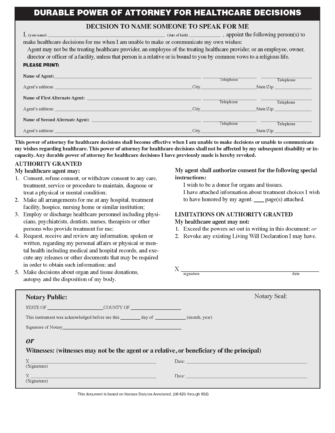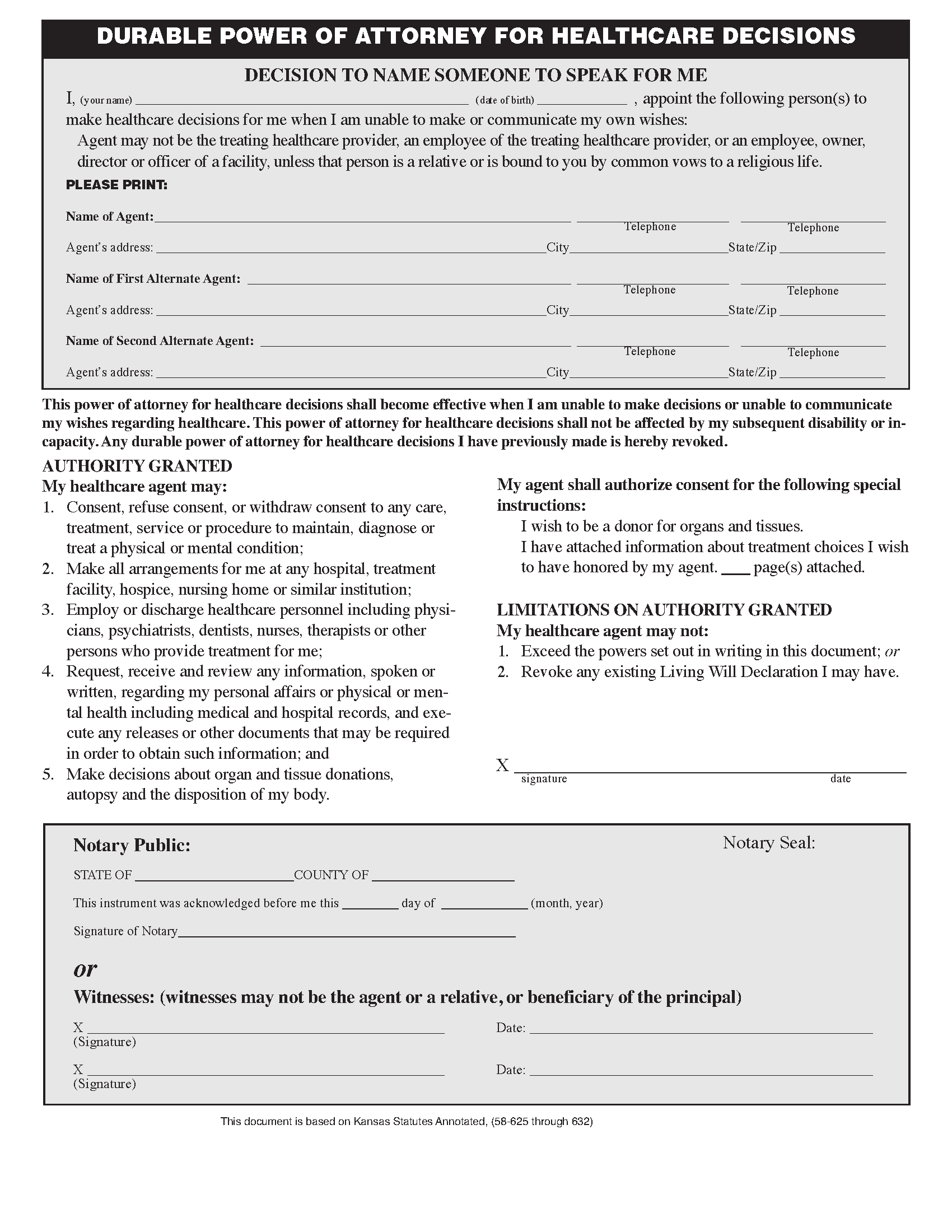Signing Requirements
A power of attorney for healthcare decisions and living will must either be signed by two witnesses or a notary public.[1]
The witnesses must be at least 18 years old and cannot be any of the following:
- The health care agent named in the document
- The person who signed on behalf
- Related to the principal
- Entitled to any part of the principal’s estate
- Financially responsible for the principal’s medical care
Advance Directive (Preview)
Revocation
An individual may revoke a living will by[2]:
- Destroying the document.
- Signing a written revocation.
- Verbally stating the intention in the presence of a witness who signs a document confirming the revocation.
The power of attorney may be revoked[3]:
- By informing the attorney in writing or orally.
- By filing a written notice with the registrar of deeds.
- By filing for divorce, annulment, or separation unless the document says otherwise.

